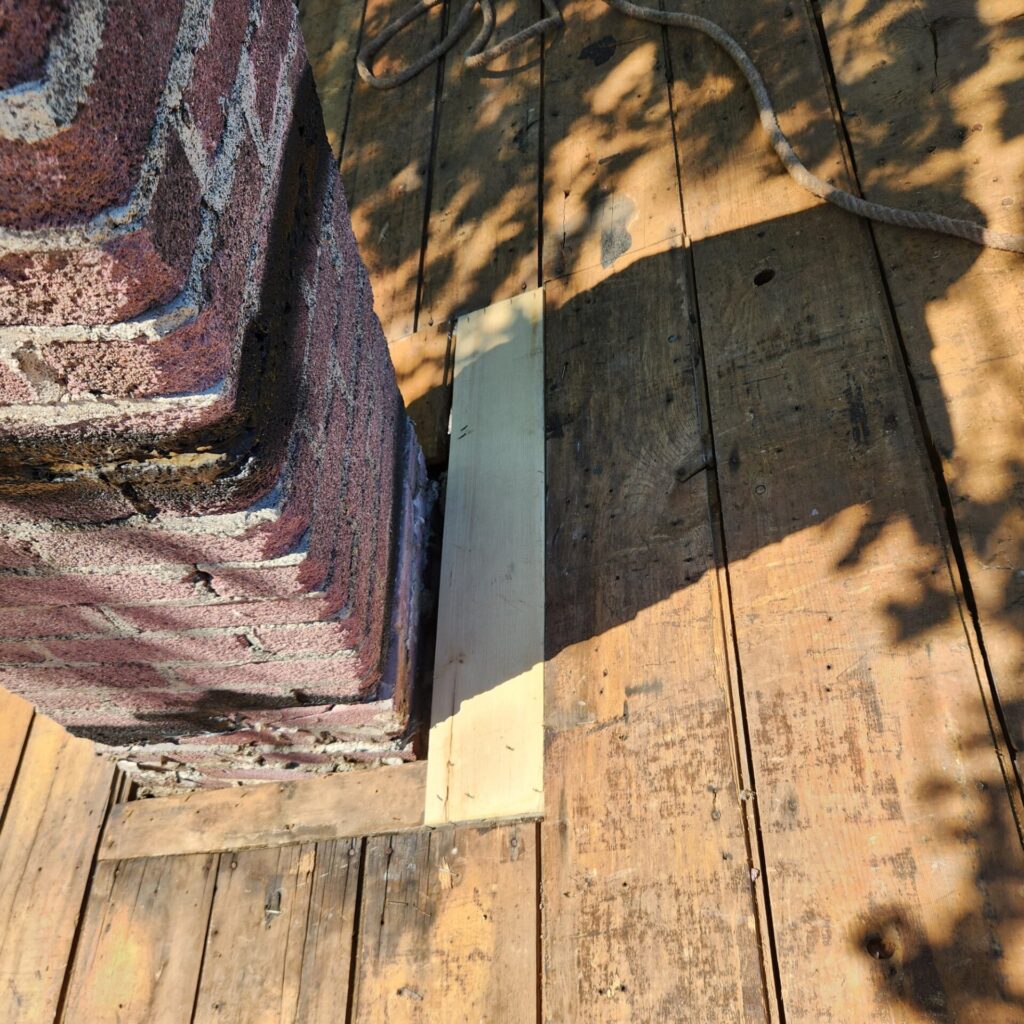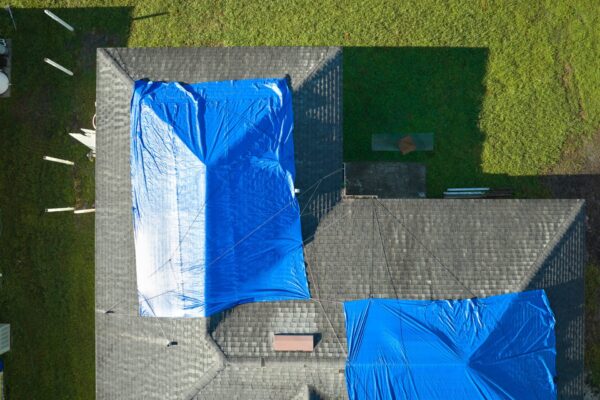Heavy rainstorms are common in Lewiston, ID, and they can quickly turn a small roof issue into a serious problem. If you’ve ever looked up to see water spots on your ceiling or heard the dreaded drip-drip-drip during a storm, you’re not alone.
In this blog, we’ll break down exactly why your roof leaks in heavy rain, how to fix it, and what you can do to prevent future damage to your home.
What Causes Roof Leaks in Heavy Rain in Lewiston, ID?
When there’s rain on your roof, it should flow smoothly down to the gutters and away from your home. But when roofing materials fail or drainage systems back up, that water has nowhere to go, and it finds a way in.
Here are the most common reasons we see roof leaks during heavy rain in Lewiston:
Damaged or Worn Shingles
Shingles are your roof’s first line of defense. Over time, they can crack, curl, or get blown off by the wind. Once a shingle is compromised, rainwater can seep underneath and into the roof decking. This is one of the top causes of roof repairs, especially after wind-driven rainstorms.
Clogged Gutters & Downspouts
Your gutters have a big job: moving water off your roof and away from your foundation. But when they’re clogged with pine needles, leaves, or dirt (especially common in the fall), proper drainage is compromised and rainwater backs up onto the roof, pooling at the edges and working its way under the shingles.
 Failed Flashing Around Chimneys & Valleys
Failed Flashing Around Chimneys & Valleys
Flashing is the metal sealing material installed around roof joints, chimneys, and valleys. When it deteriorates or separates from the roofing surface, it creates an easy entry point for rainwater. Chimney flashing is particularly vulnerable in older homes.
Roof Vent Leaks During Heavy Rain
Roof vents are necessary to regulate attic temperature and moisture, but during a storm, they can become a weakness. If the vent covers are cracked or the flashing around them has failed, wind-driven rain can leak right through. A leaking roof vent can cause both attic and ceiling damage.
Metal Roof Leaks in Heavy Rain
Metal roofs are durable, but they’re not immune to leaks. Seams between panels, improperly torqued screws, and deteriorated washers can all allow water to seep through during a storm. Rust or corrosion around screw holes is another red flag.
Pooled Water & Rain on Roof
Flat or low-slope sections of your roof can accumulate standing water if the drainage isn’t sufficient. Over time, pooled water can weaken the roofing material and lead to internal leaks. This is especially problematic if you’ve noticed water ‘sitting’ after rainstorms.
Deteriorated Roof-to-Wall Seals
These special sealing materials are used where your roof meets vertical surfaces (like walls or dormers). These seals can break down due to sun exposure and freeze-thaw cycles. Once they’re compromised, rainwater can easily penetrate and reach your drywall or insulation.
 How Do I Stop My Roof Leaking in Heavy Rain?
How Do I Stop My Roof Leaking in Heavy Rain?
While some leaks require full professional repair, there are a few short-term solutions you can try if your roof is leaking during a downpour:
- Temporary tarping and sealants – Use a waterproof tarp secured over the damaged area to limit water entry until you can schedule a repair.
- Clearing debris from valleys and gutters – If the leak is caused by pooling, try to safely clear out debris to let the water drain.
- Applying waterproof roof cement – For small cracks, you can apply roof cement or caulk around shingles, flashing, or vent bases to temporarily stop leaks.
Caution: These are not long-term fixes, and walking on a wet roof is dangerous. Always prioritize safety or call a professional.
How to Repair a Leaking Roof from the Inside
When exterior access isn’t possible due to weather, here’s how to mitigate a leak from the inside:
- Locate the source – You can do this by using a flashlight or even a GoPro camera. Trace the water path from the ceiling to the rafter.
- Apply a roof patch kit – Apply it directly to the wet ceiling or attic sheathing. Use plastic sheeting, plywood, and roofing tape if needed.
- Seal rafters and underlayment – This can be done with waterproofing tape or foam where visible gaps or drips are found.
While these methods won’t solve the underlying issue, they can help minimize further water damage until professional repairs can be completed.
Handling Ceiling Leaks & Water from Vents
Handling ceiling leaking during rain or water leaking from a vent in the ceiling during rain is more than just a nuisance. In fact, it’s a sign that water is traveling farther than you think.
- Pinpoint the leak path – Do this by checking the attic or crawlspace during a storm. Water usually enters at one point but appears in another.
- Inspect vent flashings and boots – These can warp, dry out, or detach from the roof deck over time.
- Install vent collars or drip pans – They should be installed inside the attic to catch water while waiting for repair. This prevents stains and mold growth on your ceiling.
Special Tips for Metal Roofs in Heavy Rain
Metal roofs are popular in Lewiston for their durability, but they need regular maintenance to stay leak-free. Here’s what to check if you have a metal roof that leaks in heavy rain:
- Seam fasteners and panel laps – These can separate due to temperature changes, letting water through.
- Loose screws – Over time, screws may loosen or washers degrade, especially after freeze-thaw cycles. This is a major indicator that you may need a metal roof replacement.
- Apply silicone-based sealant – Use high-quality sealant on joints, overlaps, and penetrations to restore waterproofing.
Preventive Maintenance for Lewiston’s Rainy Season
Lewiston sees heavy rainfall throughout the fall and early spring. Protect your home year-round with these preventative tips:
- Schedule an annual inspection. Our team photographs and takes video footage of your roof’s condition so you can see exactly what’s going on.
- Clean your gutters and downspouts every spring and fall to prevent backups.
- Trim back overhanging branches to reduce debris and keep your roof clear of damage-causing limbs.
Prevention is always more affordable than repair, especially when it comes to roofing.
When to Call Russell Quality Roofing
Some roof leaks are minor. Others are signs of deeper issues that need professional attention, and fast.
Call us if you notice:
- Water spots spreading across your ceiling
- Drips during storms
- Peeling paint, musty smells, or bubbling drywall
- Ongoing leaks after DIY fixes
We offer:
- Free roof inspections and estimates with detailed findings
- Honest, no-pressure quotes for repair or replacement
- Professional repair by Owens Corning™ Platinum Preferred Contractors
Explore our Residential Roof Repair Services
Don’t Let Roof Leaks in Heavy Rain Damage Your Home
Your roof is too important to ignore. Whether it’s a small leak or a big storm, Russell Quality Roofing is here to help protect your home in Lewiston and beyond.
AWARD WINNING PRODUCE
Order Online
Lorem ipsum dolor sit amet, consectetur adipiscing elit. Pellentesque vestibulum aliquam cursus. Mauris molestie aliquam urna. Curabitur nec eleifend risus. Integer eget libero sed elit pharetra ultricies eu in augue. Integer eget libero sed elit pharetra ultricies eu in augue.
BROWSE OUR ITEMS
